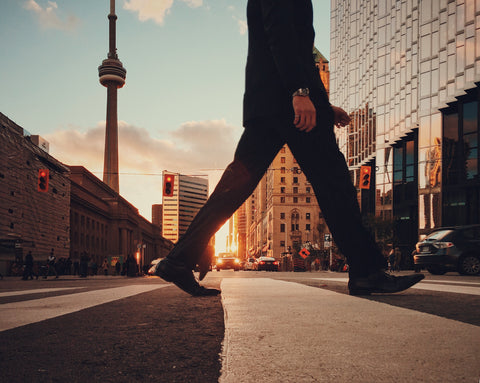Transitioning to Minimal Footwear
This is Part 3 of our 4-part Guide to Minimal Footwear
To see all sections, go to Part 1 - Why Wear Minimal Shoes

Now that you're set on minimal footwear, it's important to have a strategy on how to transition to wearing minimal shoes safely. There are many excellent corrective exercises and mobility protocols to transition and develop a healthier foot structure. Rather than go through these in detail, I'll outline some general principles here and leave you with a few resources to learn and curate your own personalized program.
-
If you want more guidance, we hold regular workshops and classes here at Cool East Market taught by knowledgeable instructors who help you train your feet to move more. We'll announce on our website and social media so follow us and keep an eye out!
Morning Routine

- Having a morning routine will pay dividends. Since all your actions throughout the day compound on how your body structure is set from the beginning, it's important to ensure the right tissues and muscles are mobilized and activated.
- A basic mobilization routine including toe movements - trying to lift each toe individually or physically manipulating the movement of each toe with your hands, ankle rolls, toe extension stretch and soleus stretch are all great ways to mobilize your feet.
- Activation drills in the form of heel drop, calf elevation and foot shortening exercises are also helpful.
- All this can be done in 15 minutes while waiting for the coffee machine, before a gym session, or right when you sit up from bed. The important thing is to try to do this every day and in the morning if possible.
Adjusting Inputs
- If you find yourself in the type of concrete urban environment mentioned above, you'll need to seek out different sensory inputs for your feet to wake up the nerve endings.
- Try giving them changes in texture: rocky, grassy, fuzzy, even a little spiky!
- Another input to seek out is grade variation. Try walking on hills with varying degrees of slope. This allows your ankles and all the joints in the feet to move and glide as your body adapts to all the variations.
Gait

Not Minimal Shoes
- Gait is another way of saying how we walk. While we don't want to actively change this too much, it will be helpful to pay attention to your gait.
- If you find that you're holding yourself rigidly while walking, try to relax or bring some mobility to those tense areas to enable a smoother stride.
- Conversely, some areas might require more tension so that the right muscles are activating.
- Don't try to overthink it. Allow your body to find it's way, becoming more efficient with the new inputs and information your feet are now receiving.
- One general adjustment is to try a shorter stride. Instead of extending your foot forward and landing hard on the heel cushioning that's no longer there, try to land that front foot a bit closer under your body. This allows your feet to stay more under your true center of gravity.
Patience & Curiosity
- Your tissues will take at least 6 months to adapt and sometimes even longer.
- If your body has been compensating with certain movement patterns, you'll need to re-wire new movements and retrain muscles that are just be waking up.
- Rather than rushing into activities too quickly, which often results in an injury, try to develop a curious attitude to what's going on in the body as you embark on this journey to better foot health. Listen to what's going on and make adjustments to your routines and inputs to give yourself what you need.
_____
This is Part 3 of our 4-part Guide to Minimal Footwear

